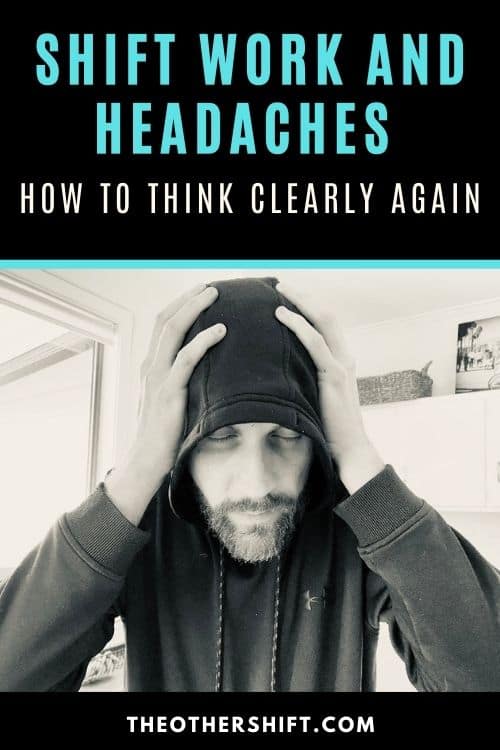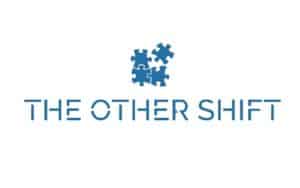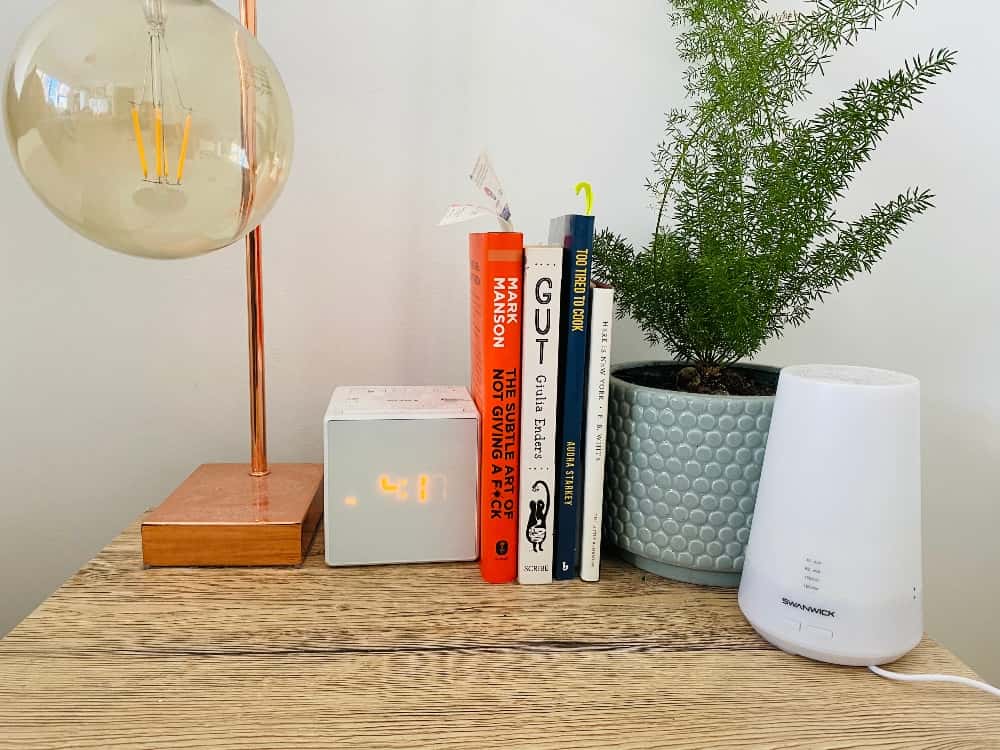Disclosure: This page may contain affiliate links, meaning we receive a commission if you decide to make a purchase through our links, but this is at no additional cost to you. Please read our disclosure and privacy statement for more info.
There is not much worse than coming down with a headache in the middle of a shift and yet, headaches seem to be a common occurrence among shift workers. We have been receiving some requests from our dear readers to explore the link between shift work and headaches, so we shall.

Shift workers are more likely to experience headaches, especially when working inconsistent shifts. Headaches have been attributed to common by-products of shift work including sleep deprivation and dehydration. Shift work can also exacerbate existing conditions that cause headaches.
This correlation is nothing to balk at, so we have come up with this guide to help you understand why shift work can put you at a higher risk for headaches and migraines and how you can minimize that risk.
The Link Between Shift Work and Headaches
A study by the Danish Working Environment Research Fund analyzed headache and migraine frequency in over 5,000 shift workers. According to their findings, shift workers are about 25% more likely to experience headaches than the general population.
That number increases to 75% among shift workers who had been previously diagnosed with a migraine disorder.
Not all shift workers, however, assume the same risk for headaches and migraines.
Perhaps it is not surprising that the vast majority of shift workers who reported headaches and migraines were on a night, rotating, or swing shift schedule. Whereas, those with fixed a day shift were less likely to experience neuralgia.
A recent article in the Journal of Occupational Health broke the association between shift work and headaches by identifying other factors that influence shift workers susceptibility to neuralgia. These factors include:
- Scheduling: shift workers with fixed evening work, or rotating shifts were 56 percent more likely to seek treatment for migraines compared to those with fixed day shifts.
- Juniority: junior shift workers tended to experience more headaches. Perhaps this is because the senior ranks had already lost colleagues prone to headaches.
- Gender: women are already more susceptible to hormone-related headaches, shift work appears to exacerbate this.
- Job insecurity: headaches increased among shift workers who questioned the security of their position, likely due to added stress.
- Job tasks: Shift workers with physically demanding job tasks were more likely to experience headaches.
All of this is to prove that science backs up what many of us have experienced for ourselves, the link between shift work and increased frequency of headaches and migraines.
If you’d prefer to watch then read, take a look at the video below which explores how I avoid and treat headaches as a night shift worker.
Why Shift Work Causes Headaches and How to Fix It
Shift-based occupations can impact our mental and physical health if we are not proactive to mitigate the by-products of shift work. We will dedicate this section to exploring the various causes for headaches among shift workers and provide some solutions to help you avoid work-related headaches.
Before we dive in we wanted to make sure to share a fantastic resource with you. This podcast by Audra Starkey was a fantastic educational resource for us while we were researching this post. If you have a spare moment on your commute to work, we highly recommend giving this episode a listen!
Shift Work Sleep Disorder
Sleep deprivation is one of the biggest risk factors that can impact a shift worker’s overall health and if left unaddressed sleep loss can develop into a full-blown sleep disorder known as Shift Work Sleep Disorder (SWSD).
It is estimated that anywhere between 10 and 40 percent of shift workers have some form of shift work sleep disorder.
Sleep loss can cause headaches in two main ways:
First, sleep deprivation decreases our brain’s ability to evaluate pain signals and activate natural pain relief systems in our body.
This has the dual effect of lowering pain tolerance, as tiredness increases pain sensitivity, while also decreasing the body’s ability to sooth pain, since sleep deprivation inhibits dopamine release. This makes chronically tired shift workers more susceptible to chronic headaches.
Second, there is a demonstrated link between tiredness and instances of tension headaches.
This is because sleep disturbances are often coupled with other comorbidities such as stress and depression, which can be related to the demands of a shift-work occupation.

The Fix
To help mitigate headaches caused by lack of sleep or SWSD you have to make sure you are getting enough sleep!
On average, adults need between 7 and 9 hours of sleep each night. To prevent sleep deprivation, it is imperative that shift workers establish and maintain good sleep hygiene. That means:
- Sleeping on a consistent schedule (whenever possible)
- Caring for your sleep-wake cycle through strategic light exposure
- Avoiding stimulants like caffeine and nicotine within 6 hours of bedtime.
- Limiting alcohol consumption, which can disrupt sleep
- Making sure your room is optimized for sleeping by keeping it cool, dark, and quiet – here are the blackout blinds we recommend via our shift work tools page
Related: The Night Shift Power Nap: What You Need to Know
[VIDEO] – Here is a video I recorded to show you the sleep aids I love and use everyday!
Dehydration
Dehydration is a common cause of headaches among shift workers, especially when working the night shift. When you get dehydrated your brain can shrink (Yikes!) due to fluid loss, causing a headache.
Dehydration headaches seem easy enough to prevent or relieve, all you have to do is drink some water right!? Well, yes, but it might not always be that easy.
There are a few things that can obstruct your body’s ability to absorb enough water from the fluids you drink. These include:
- Higher altitudes: Whether you live in a high-altitude location or work in an airplane, the dry air surrounding you is literally sucking water out of you.
- Magnesium deficiency: If you are magnesium deficient your body cannot absorb as much water as it could/should.
- Stimulants: Caffeine increases urine output which increases your risk of dehydration.
The Fix
You can hep facilitate water absorption by adding a pinch of sea salt to your water before or during your shift.
To make sure you are getting enough water during your shift, this smart water bottle will remind you to take a drink by lighting up and pushing a notification to your smart phone or smart watch. Alternatively, you could download a water reminder app that will push notifications to remind you to stay hydrated throughout the day.
If you hate the taste of water this water bottle has an adjustable flavor well that you can fill up with your favorite water flavored water enhancer.
Caffeine
Let’s face it, most shift workers rely on caffeine to make it through long shifts. Unfortunately, caffeine is an addictive substance, like nicotine, and our bodies will go through withdrawal if we suddenly change our caffeine habits.
When we consume caffeine regularly our body becomes used to its effects. For our purposes it is good to note that caffeine narrows the blood vessels around the brain, so when we stop consuming caffeine and its effects are allowed to wear off completely, those blood vessels will enlarge again, triggering a headache.
The Fix
To prevent caffeine headaches, it is advised to pay attention to your caffeine consumption. If you find that you are consuming more than the recommended daily dose (400 mg for adults) it might be good to slowly scale back.
That said, if you happen to have a nagging headache at work, think back to your last cup of coffee, if your body is in the habit of getting a dose of caffeine before your shift and you missed it, your body might simply be asking you for a cup of coffee.

Blood Sugar Issues
Blood sugar dysregulation is common among people with diabetes, but you don’t have to be diabetic to experience blood sugar-related headaches.
Our bodies are at their best when they are in a state of homeostasis, which refers to a state of internal balance. When something like our blood glucose levels become unbalanced or dysregulated, our brains will attempt to bring our bodies back into homeostasis by activating hormones like epinephrine. The release of these kinds of hormones restrict blood vessels in the brain and cause headaches.
Often times shift workers, will reach for sweet treats when they feel sluggish. Unfortunately, sugary foods and beverages tend to cause a sharp spike in blood glucose levels followed by a “crash” when the body ultimately releases insulin to bring blood sugar levels back inline. This spike and crash can absolutely cause a headache.
The Fix
Stop washing that chocolate bar down with a soft drink! Instead, reach for snacks that will help sustain your energy levels instead of spiking them.
There are tons of energy-boosting foods that are will fuel your body throughout your shift without knocking your blood sugar out of whack. Some great foods to add to your snack drawer include:
- Oranges: oranges are full of vitamin C and antioxidants that can protect against oxidative stress that can make you feel tired.
- Chickpeas: roasted chickpeas are a satisfying and energizing snack and a great alternative for nuts if you have allergies.
- Sweet potato chips: sweet potatoes are complex carbs and great sources of fiber, so your body digests them slowly, providing you with a steady supply of energy. I love mine with some fresh herbs, paprika and Tony’s Creole!
Related: Healthy Meals for Shift Workers (with Recipes and Videos)

Environmental Causes
Environmental factors including, but not limited to, bright light, smoke, humidity, fumes, and intense scents can also cause headaches among shift workers who are exposed and/or sensitive to these types of triggers.
For example, airline shift workers, like pilots, flight attendants, mechanics, caterers, and aircraft cleaners are all at risk for developing headaches from exposure to jet fuel and other toxic fumes.
The Fix
Environmental headaches are usually cluster headaches and since the triggers are external in the event of an environmental cause, it can be hard to mitigate these types of headaches.
That said we do have a few tips that might help:
- If you are exposed to a fume or intense smell, opting to wear a face mask can help to reduce your chances of inhaling too much of the triggering substance, thus limiting your chances of getting a headache.
- If you are sensitive to light exposure, wearing glare and blue-light-reducing glasses can help to prevent light-induced headaches. These yellow-tinted glasses may look a bit silly but they are effective at reducing eye strain and headaches. See below.
· If you are sensitive to humidity changes, bring a (de)humidifier to work. This desktop dehumidifier is a great option if you can’t stand high humidity, while this portable humidifier is great for people who are sensitive to dry air.
It is also a good idea, while we are on the topic, to suggest visiting your doctor to discuss possible allergies that may contribute to your headaches.


Dietary Causes
We already discussed how blood glucose levels can contribute to headaches, but let’s examine other ways in which diet can contribute to a shift worker’s susceptibility to headaches. We consider diet to be a by-product of shift work because shift work is can be a huge obstacle when it comes to maintaining a healthy, nutritious diet.
Certain types of foods can contribute to headaches. These include high histamine foods, such as yogurt and processed foods containing nitrites, nitrates, yellow dyes, or MSGs. Some people even get headaches after consuming artificial sweeteners, so it is good to be conscious of the artificial ingredients that you are putting into your body.
Additionally, hunger itself can cause headaches. If you are not providing your body with enough fuel you could experience hunger headaches. This is why it is so important to make sure you are getting enough to eat throughout your shift. In other words, your diet could be the root cause of your headaches.
The Fix
Eating enough of the right foods can help stave off diet-related headaches. Some strategies to help you do this might include:
- Packing healthy meals and snacks to eat during your shift. See some epic meal prep ideas here.
- Keeping a symptom diary for a month so you can notate when a particular food or ingredient gives you a headache.
- Making sure you discuss any calorie restrictions with a dietician before embarking on a weight-management diet such as keto, intermittent fasting, the volumetrics diet or a plant-based diet.

Shift Work Headaches: Other Considerations
So far, we have discussed six by-products of shift work that can contribute to, or even cause, headaches. But before we move on to some suggested remedies for shift-related neuralgia we want to briefly bring up three other things that you should take into consideration if you are experiencing frequent headaches.
1. Migraine Disorders: There are a few different types of migraine disorders. Some are hereditary, so it is a good idea to visit your doctor to be screened for pre-existing migraine disorders if you are experiencing chronic migraines.
2. Food sensitivities: Food sensitives, such as gluten intolerance, can cause headaches. It is quite possible that you have a food sensitivity that has gone unrecognized if you experience frequent headaches, especially after eating. It is recommended to have a doctor or dietician rule out any food allergies if you are suffering from chronic headaches.
3. Hormone Imbalances: Women are prone to hormone headaches due to hormonal imbalances that occur throughout their menstrual cycles. There are treatment options available, but you do need to visit a doctor to have these imbalances diagnosed.
The bottom-line, if you are experiencing chronic headaches your first stop should be at your doctor’s office.

Remedies for Headache Relief
Better living through chemistry is not always better. Though it may be convenient to reach for your favorite Nonsteroidal anti-inflammatory drug (NSAID) when you feel a headache coming on, it is not sustainable to pop an Advil every time you get a headache, particularly if they are frequent.
On behalf of your digestive system, we recommend trying a few different natural remedies for headaches. These are some of our favorites.
Headache Juice
This headache juice, developed by Claire Georgiou and recommended by Audra Starkey is packed with anti-inflammatory and hydrating ingredients designed to provide you with headache relief and prevent future headaches.
You can whip up a batch of this juice with any cold-press juice machine or blender and drink it before your shift to help mitigate work-related headaches and set you up for a great shift.
Ginger and Ginger Powder
Ginger can treat headaches by reducing inflammation and prostaglandin production. Adding a scoop of ginger powder to your tea, smoothies, juice, or lemon-water can be a powerful way to prevent headaches while at work.
If you need a more transportable form of ginger, you can also try ginger root capsules. Take a ginger pill when you feel a headache coming on and you can reduce its severity.
Ginger has a bunch of other neat benefits. It can, for example, help treat nausea, making it a great tool in any shift worker’s arsenal of remedies.

Take Some Magnesium
Magnesium does a number of really useful things in the body. For example, it helps your body regulate blood sugar, and facilitates nerve transmission. If you are magnesium deficient your body may transmit pain differently or end up with the blood sugar dysregulations we discussed earlier. As such, magnesium can be a safe and effective remedy for addressing shift-related headaches.
Adding 600 mg of magnesium citrate per-day to your supplements has been shown to help reduce both the frequency and severity of headaches.
You can also increase your magnesium intake by consuming magnesium rich foods like Tofu, pumpkin seeds, fatty fish, and dark chocolate. That’s right treat yourself to some dark chocolate, for your health.
We chat a lot about Magnesium in this article – Which Vitamins Should I Take on Night Shift? if you’re keen to learn more.
Aroma Therapy
Aroma therapy can either help or hurt if you struggle with chronic neuralgia. If strong scents trigger your headaches, it might be better to stay away from aroma therapy, otherwise the use of peppermint and/or lavender essential oils can help relieve headache pain.
There are a few easy ways to self-treat with aroma therapy while at work.
- You can buy a portable essential oil diffuser, like this one. Though it might be good to check with colleagues before turning it on in common spaces.
- You could opt to wear an aroma therapy bracelet like this one, so you can sniff it when you feel a headache on the horizon.
- You could dab a drop of essential oil onto your temples.
- You could literally just open the bottle of pure essential oils and waft the oil sent towards your face.
The general rule, when it comes to successful aroma therapy is, less is more. Essential oils have strong scents, so you should not apply them too thick and also be aware of the fact that your therapy may have the opposite effect on a colleague working in close proximity to you.
Below is a picture of a simple diffuser I use every single day from Swanwick Sleep. While it’s not super fancy, it’s incredibly effective for a pretty reasonable price. Take a look here at the Swanwick Sleep website.
Try Acupuncture or Acupressure Therapy
Acupuncture is a type of traditional Chinese medicine that works by stimulating specific points on the body by inserting small thin needles. Over 22 studies have determined that is an effective treatment for migraines and chronic headaches.
Acupressure is a therapy that involves applying pressure to specific pressure points in the body to help relieve pain and headaches. It’s like acupuncture for people with an aversion to needles. A 2014 review of acupressure did confirm that it is a credible therapy for people suffering from chronic neuralgia.
Both of these therapies work by releasing tension that can build up in the body as a result of demanding shift work schedules. It also works by disrupting pain signals that may exacerbate or trigger headaches.
We have spoken about Acupressure before in this article – What Causes Night Shift Nausea and How to Finally Beat It. Looks like is great for both our heads ad belly’s!
Final Thoughts: Shift Work and Headaches
Headaches are a pain, literally! And the thought that our jobs can make them worse or increase their frequency sucks. There are ways in which shift workers can reduce their risk of chronic neuralgia and hopefully end the suffering.
We hope this resource will be helpful to those of you who were wondering about the connection between shift work and headaches.

Disclosure: This page may contain affiliate links, meaning we receive a commission if you decide to make a purchase through our links, but this is at no additional cost to you. Please read our disclosure and privacy statement for more info.
Resources
- Starkey, Audra. “HSW 98: Minimizing Headaches After Night Shift.” Podcast. The Wellness Coach. Feb. 13, 2020. Web.
- Appel, A.M., et.al. “Shift Work Tied to Higher Migraine and Headache Risk.” MD Edge. Feb 18, 2020. Web.
- Leso, Veruscka, et.al. “Shift work and migraine: A systematic review.” In Journal of Occupational Health vol. 62. Mar 18, 2020. Web.
- Sandoe, Claire, et.al. “The Impact of Shift Work on Migraine: A Case Series and Narrative Review.” Pub Med. Aug 30, 2019. Web.
- Anwar, Yasmin. “Sleep loss heightens pain sensitivity, dulls brain’s painkilling response.” Berkeley News. Jan 28, 2019. Web.
- Cirino, Erica. “Headache from Lack of Sleep? Here’s What to Do.” Medically reviewed by Shilpa Amin, M.D. Healthline. Nov 27, 2018. Web.
- Fletcher, Jenna. “How to recognize a dehydration headache.” Medically reviewed by Deborah Weatherspoon, R.N, Ph.D. Medical News Today. May 19, 2017. Web.
- Tornstrom, Kelli, N.P. “Does caffeine treat or trigger headaches?” Mayo Clinic. Oct 12, 2020. Web.
- Leonard, Jayne. “Why does diabetes cause headaches?” Medically Reviewed by Seunggu Han. Medical News Today. Apr 23, 2019. Web.
- “Hormone headaches.” National Health Service. Web.
- “Top 7 reasons you have a headache.” Harvard Health Letter. Apr 2020. Web.
- McDermott, Annette. “10 Natural Ways to Reduce Migraine Symptoms.” Medically reviewed by Deborah Weatherspoon, R.N., Ph.D. Healthline. Jul 30, 2020. Web.
- Kubala, Jillian, M.S., R.D. “18 Remedies to Get Rid of Headaches Naturally.” Healthline. Feb 4, 2018. Web.
Recent Posts
An examination of the night shift professions, that while sometimes underappreciated, are necessary for civilization, in its current form, to exist. A city can be thought of as a machine. Each...
Culminated from an exhaustive yet well-funded journey into the night, this article will prepare you for life outside of work while being a denizen of the dark. During days off, night shift...


